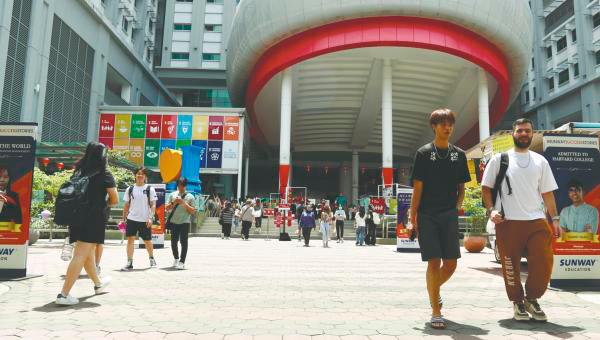THE issue of student safety at educational institutions has been frequently brought to our attention, especially by concerned parents.
Recently, the country has been plagued by tragic incidents involving students, including bullying, depression, electrocution, food poisoning, sexual harassment and other accidents.
Providing a safe and secure environment for students of higher learning is more challenging now than ever. This continuous calamity has dealt a tremendous blow to the educational sector.
Educational institution management must play a bigger role in providing a conducive and safe learning environment for students.
Malaysia aims to equip its education system to produce a generation of well-prepared learners, bolstering information technology facilities and infrastructure.
This effort is crucial as students face not only personal safety risks but also cyber threats.
The committee is also responsible for ensuring students’ safety during every learning session.
In the context of the workplace, it is the employer’s responsibility to ensure that the company complies with the Occupational Safety and Health Act 1994, which is enforced by the Occupational Safety and Health Department.
In general, there are four safety components in educational management: building, physical, emotional and cyber.
Building safety requires a comprehensive schedule consisting of routine inspections, preventive maintenance and periodic equipment reviews.
Educational institutions are in charge of auditing each facility to guarantee that it is in excellent shape, is functioning, safe and controlled. It covers all student activities, classrooms, laboratories, offices, sports areas, canteens, toilets, dorms, water tanks, electrical cabling, security surveillance and other amenities.
Physical safety involves preventing children from accidents, whether they are natural, unintentional, or man-made.
Natural hazards include floods, earthquakes, air pollution, contaminated water and soil erosion.
Unintended accidents are events that cause harm, such as food poisoning, a collapsing ceiling, or getting injured.
On the other hand, man-made threats involve intentional harm, such as physical assault, bullying, violation or molestation.
Emotional safety pertains to students’ mental and psychological well-being, which is crucial for their development and academic progress.
Emotional threats may include ridicule or isolation by peers, which can significantly impact students. Early detection of such symptoms by parents and educators is essential. If left unaddressed, these issues can lead to feelings of hopelessness, self-harm or even thoughts of suicide.
There is also cybersecurity to consider. Excessive use of electronic gadgets by students can lead to negative ergonomic impacts, loss of focus on studies and increased addictive behaviours.
Students are vulnerable to becoming victims of fraud syndicates. While social media serves as a communication platform, sharing daily activities can heighten the risk of cyberbullying and the unauthorised dissemination of private photos or videos.
Ensuring student safety is paramount at all times. This effort requires the commitment of educational institutions, parents, the community and the students themselves.
Additionally, activities focused on hazard awareness will enhance students’ knowledge and understanding, emphasising the importance of prioritising their safety and being vigilant about their surroundings.
The rise of artificial intelligence technologies simplifies the use of monitoring systems through digital applications.
Communication, reporting and recording can all be performed more effectively and efficiently. Alternatively, a video streaming platform is specifically designed for online interactions with parents.
The writer is a special officer (Research) at the Manpower Department, Human Resources Ministry. Comments: letters@thesundaily.com









